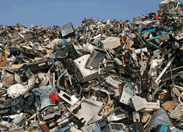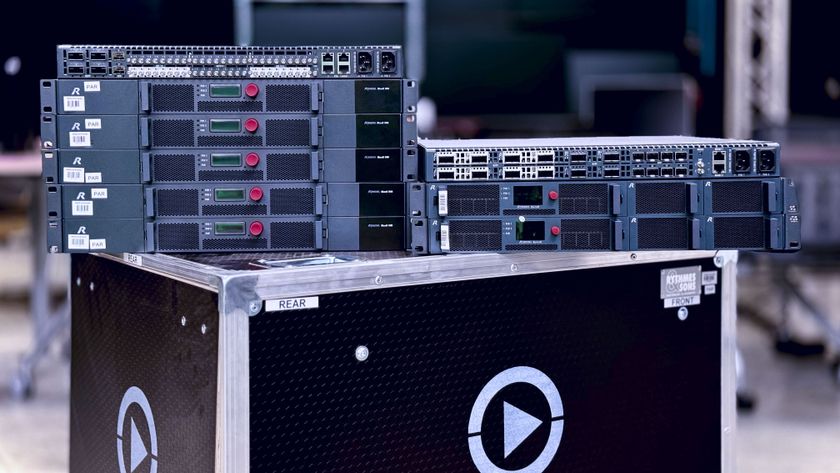Contemplating The Who, The What, And The When Of Electronics Recycling
If we’re serious about sustainability, at some point we have to ask ourselves the question: Where can we have the most impact? Reducing the energy demands of our systems and taking our AV control knowledge into the broader building automation world is an opportunity to be green and make some green. However, the area where I believe we could have the biggest impact on true sustainability is in dealing with E-waste.
PILED HIGH AND DEEP
You don’t need a Ph.D. in waste management to understand the growing problem of E-waste. A 2007 EPA study concluded that we discard more than three million tons of E-waste in the U.S. alone, with less than 14 percent of electronics being recycled. The remaining 86 percent end up in a landfill or are incinerated, unleashing harmful toxins into our environment. E-waste accounts for 70 percent of the heavy metals in our landfills, and E-waste is growing at a rate more than seven times the growth rate of waste in general. With another holiday season right around the corner, another mountain of “outdated” computers, TVs, and cell phones will be headed for a landfill near you.
40 BILLION AND COUNTING
InfoComm’s 2007 AV Market Definition and Strategy Study calculated the AV market in North America to be a $24.5 billion industry, about half of which is hardware sales and the other half is services-design, integration, programming, rental/staging labor, maintenance, etc. The global AV market size is estimated to be approximately $80 billion. Using the same breakdown, that would mean we sell and deploy approximately $40 billion worth of professional AV equipment each and every year!

Now, let’s definitely take about two and half seconds to congratulate ourselves on creating this massive market for AV goods and services. OK, are we done with that? Now, close your eyes and imagine what $40 billion of AV hardware looks like. Seriously, imagine all of that hardware laid out before you. How far and wide would it stretch? Now imagine all of that hardware ending up in a landfill with another $40 billion in gear right behind it the following year, and the next, and the next. It staggers the mind, or at least it should.
“But, wait a minute,” you say, “We’re deploying this equipment, not throwing it away.” True, and through the ’80s and ’90s, we were mostly in the additive era of AV (i.e., designing and installing AV for clients who had none or very little). Today, however, we are mostly replacing systems for clients who already have AV. True, we might be “replacing” old equipment by moving the client into a shiny new building with shiny new equipment, but where does all that old equipment from their old building go?
Eight Letters: L-A-N-D-F-I-L-L. Truth be told, I’ve seen a lot of “landfills” in the basements of library media centers where stacks of old projectors, CRT monitors, and other AV museum pieces are hanging out until the day some administrator says, “Get rid of this stuff so we can turn this electronics boneyard into some offices.” Sooner or later, at least in the U.S., that stuff is probably destined for a landfill somewhere.
And this trend to replace old gear with new is only going to accelerate. As we make the full transition from 4x3 to 16x9, from analog to digital, from standard definition to high definition— and many in the AV industry are banking on it—there’s going to be a lot of old stuff to throw away. So what do we do? Where do we turn for help?
If you’re reading this article from somewhere within the European Union, you might be saying right about now, “Hey Scott, uh, we kinda figured this out already. We’ve got the Waste Electrical and Electronic Equipment (WEEE) Directive.” True, in 2003 the WEEE Directive became European law and put the burden on the manufacturer to dispose of the electronics they produce in an environmentally friendly manner. Other countries around the world have enforced different strategies for dealing with E-waste within their borders depending on their own parochial, hotbutton issues. China’s laws, for instance, deal mainly with the importation of E-waste, since that is their biggest challenge.
Meanwhile, the U.S. federal government has been a little slow on the uptake. While several bills were introduced in the U.S. House and Senate this year, the current political climate in Washington these days gives little hope that we can agree on anything as mundane and commonsense oriented as E-waste legislation.
Not content to wait forever, there are now 20 U.S. states with some form or other of E-waste legislation on the books. Fourteen states introduced legislation this year that is still pending, while 16 states have essentially done nothing. This patchwork quilt of legislation results in a confusing E-waste landscape in the U.S. with little likelihood that states will harmonize their requirements anytime soon. While waste is a common problem that knows no borders, we can’t seem to come to a common consensus on how to deal with it.
GLIMMERS OF HOPE
Some manufacturers are taking matters into their own hands irrespective of non-existent federal mandates. Display manufacturers Panasonic, Sharp, Toshiba, Mitsubishi, and Vizio comprise the Manufacturers Recycling Management (MRM) Company, whose goal is to “develop recycling systems that are convenient for consumers and open to participation by all electronic product manufacturers.” However, this program is expressly designed for consumer electronics, not commercial AV equipment. So, where do we go for pro AV solutions?
A few pro AV manufacturers, including Da-Lite and SonicFoundry, have started take-back programs. This is laudable and should be rewarded, but when are the big electronics companies in our industry going to get serious about E-waste? If Dell can recycle computers, why can’t our control, audio, and video manufacturers recycle their electronics? Likewise, will any of the Top 50 systems integrators featured in this magazine step up to the plate and make a business out of helping their clients deal with E-waste? How would they go about this even if they wanted to? Will consultants’ specifications begin to address this issue? How would we go about doing this?
I obviously have more questions than I have answers, but what I know for sure is that we have to stop the madness and come up with a comprehensive plan for dealing with e-waste, sooner rather than later. The InfoComm Green AV Special Interest Group (SIG) was established to facilitate industry-wide conversations on issues like this. If you are a manufacturer or integrator who has a great E-waste story to tell or have ideas for how the pro AV community can start answering these questions, go to www.infocomm.org/community, join the SIG and tell us about it. A growing movement of concerned AV professionals is waiting to reward the companies that are helping to solve this problem.












